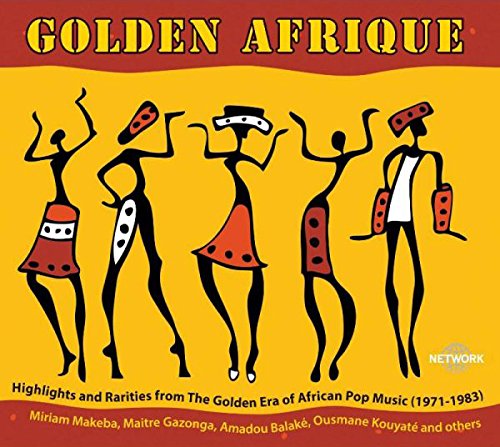Orchestra Baobab Made In Dakar Rarest

 Orchestra Baobab Harbourfront Centre, Toronto ON - July 10, 2003 This concert had some high expectations preceding it. Orchestra Baobab formed in 1970 as the house band of the Baobab club in Dakar. Originally released in Europe in late 2007 and issued in North America the following year, MADE IN DAKAR is the second album by Orchestra Baobab following their 2002 reunion after nearly two decades apart.
Orchestra Baobab Harbourfront Centre, Toronto ON - July 10, 2003 This concert had some high expectations preceding it. Orchestra Baobab formed in 1970 as the house band of the Baobab club in Dakar. Originally released in Europe in late 2007 and issued in North America the following year, MADE IN DAKAR is the second album by Orchestra Baobab following their 2002 reunion after nearly two decades apart.
Performing in, New York, June 2008. Background information Origin, -- fusion.
Years active 1970–1987 2001–present Website Orchestra Baobab is a Afro-Cuban,, and band. Organized in 1970, as a multi-ethnic, multi-national club band, Orchestre Baobab adapted the then current craze for (growing out of the Congolese style) in to culture and the musical traditions of the. One of the dominant African bands of the 1970s, they were overshadowed in the 1980s and broke up, only to reform in 2001 after interest in their recordings grew in Europe.
Had this post almost completed before my 'summerbreak', so with almost 2 months delay I have for you a 2008 concert by Orchestra Baobab. Top band on Pure Jazz 2008: the legendary Orchestra Baobab from Senegal, Cuban swing and traditional West African music in a group catchy sound. Especially the cheerful and colorful tenor saxophonist Issa Cissoko made a party and sought all the time eye contact with the audience. (sources: - ) Apart from above pictures didn't find much about the Pure Jazz Festival (seems 2008 was the last edition), so here short something about (Orchestra) Baobab: In the early 1970s Barthelemy Attiso, born in Togo, was living as a law student in Dakar, in his free time he had learned himself to play guitar. Together with Balla Sidibe, Medoune Diallo and Issa Cissoko he started a band called Orchestre Saf Mounadem. Soon they could get a residency at the recently opened Baobab Club in Dakar, so they recruited some more members, mostly former musicians rom the Star Band and changed their name to Orchestra Baobab. They played Afro-Cuban music and as a multi-ethnic and multi-national band they fused this with their own traditions, like harmonies and drumming from Casamance (in southern Senegal), melodies from Togo and Morocco and Wolof tradition from northern Senegal.
Till 1985 they recorded some 20 albums and when in 1979 the Club Baobab closed its doors the band succesfully sought new venues to play. In the meantime a new style of music, called Mbalax, had developed and steadily gained popularity, so that in the mid 1980s Orchestra Baobab with their Afo-Cuban based music were considered 'old fasioned'. This resulted in a break-up of the band, some members forming or joining other groups, and Barthelemy Attisso even returning to Togo to practice law. After their break-up some of their albums were released in Europe, these got much critical acclaim and sold reasonably well outside Senegal. In 2001 at instigation of their English record label and successful Mbalax musician Youssou N'Dour they came together again and started preparing for an international come-back tour. This tour was so succesful that they decided to continue with the band and since then they have made regular tours around the world and even some new recordings. During one of those tours they played at the Pure Jazz Festival in The Hague, Holland.
I'm not sure that one would actually call that rhythmic pattern a clave - clave is, very specifically, the Afro-Cuban pattern played on claves. This also is probably not quite the same as on the Oumou Sangare song. She's Wassoulou, and her group normally sticks to rhythms that are found in the region. (Unlike, say, Habib Koite, who not only uses rhythms from all of the different groups of people in Mali, but Cuban, etc. As well.) I think you *might* be hearing segments of different parts of a single rhythm, one that is meant to be played on multiple instruments. But without hearing a specific example, I can't say for sure.

It is, however, my guess, due to the sources Baobab has always drawn on for their music. A *lot* or rhythms from these parts of West Africa have multiple parts, especially if musicians are using arrangements made for the stage, as opposed to dances in villages (i.e., not urban areas). It really depends on who is doing the arranging, how the rhythm is put across by whoever is playing, etc. Keep in mind that there is a very strong melodic component to West African rhythms; it is about more than 'time.' (I know, this is probably a bit weird, but I have been studying Malinke percussion for 9 years, and know a few dance rhythms from different parts of Mali as well - am a big fan of most every Malian style I've ever heard, in fact!) The thing is, very often we Westerners hear something and think 'Oh, this is the same thing as that' when in fact it's not.